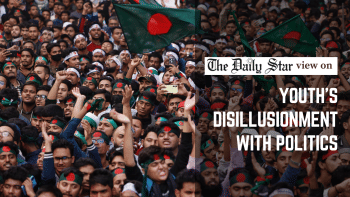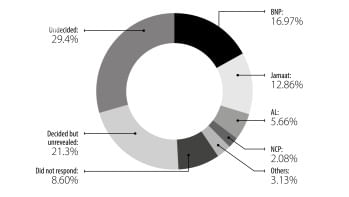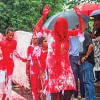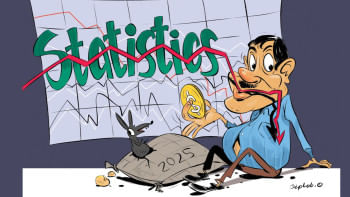What the SANEM poll reveals and what it does not

The South Asian Network on Economic Modelling (SANEM), in collaboration with ActionAid Bangladesh, recently released a survey that focuses on the youth's perception of jobs, education, and the changing political scenario post-July 2024. Although the survey has a clearly defined scope, the results of the poll are being widely misinterpreted in the media, particularly the fact that the poll does not tell us anything about the voting intentions of the youth!
SANEM sampled 2000 youth in the age group of 15-35 years with an urban-rural distribution of roughly 50:50. Male to female distribution is roughly 54 percent to 46 percent. SANEM sampled two districts per division and two upazilas per district. This means they sampled 16 districts and 32 upazilas. The presentation provided by SANEM does not tell us about the distribution of samples in the districts and upazilas. It was an in-person survey. Every fifth household was sampled.
We need to unpack certain aspects of SANEM's methodology before explaining how much of this survey can be used to explain whom the youth will vote for if an election were to take place now. The scope of SANEM's survey is beyond the youth's electoral preference. However, as the media has primarily picked up on the electoral preference and a fair degree of misinterpretation is going on, it is important to bring a few points to light.
First, the methodology does not explain whether a ward or a village in the selected upazila was chosen as a primary sampling unit (PSU). It is important to know how many houses were sampled per ward or village, as there is a group effect. We assume that the samples from a ward generally tend to behave similarly due to homogeneity in socio-economic aspects.
Second, there is no explanation of how the 16 districts and the 32 upazilas were selected. The list signals that it was purposively decided. Most of these districts that were selected generally tilted between BNP and Awami League. There is a possibility that the constituencies that fell under the PSUs, drawn by the survey, are either pro-BNP or pro-Awami League. As such, the survey results might not have fully grasped the youth's perception regarding the influence of religion-based politics. A much larger sample size with nationwide coverage will be required to capture all types of constituencies in a fully randomised scenario. Therefore, it is necessary to understand whether the upazilas were randomly or purposively selected and the rationale behind their selection.
Third, we need to know how the total sample of 2000 was derived, at what confidence interval, and how it was distributed among the district and the upazila. At the very least, the sample size does not seem to be proportionally distributed according to the population of the targeted respondents (youth aged 15–35). The margin of error of the key statistics provided in this survey is also unknown. SANEM may publish a full report, with answers to all these queries. But for now, we are left in the dark.
Now comes the most significant question that took centre stage in the media. SANEM intended to capture the "youth's view on the upcoming election." Of the respondents, 76.78 percent said they will vote, 4.14 percent said they will not vote, and 13.98 percent are not yet registered voters. While it is remarkable that almost 77 percent are willing to vote, around 77 percent of the respondents said they do not follow national politics closely. Of them, 20 percent said they do not follow national politics at all, 17 percent said they do not follow it closely, and 39 percent said they follow occasionally. It thus appears that there is enthusiasm to vote, but not much awareness about the unfolding political scenario. Is it not a core finding of this study that, despite July being termed as the youth uprising, the youth of the country is apathetic towards politics? The media has completely ignored this finding.
Also, around 14 percent or 280 respondents are not yet registered to vote. If we discount this, 1720 respondents surveyed should have been asked whom they would vote for. Note these aspects of the poll: (i) it does not ask respondents whom they would vote for in the next election; (ii) it does not restrict the question to the 77 percent who expressed willingness to vote in the next election; and (iii) and of the total respondents 1935 people responded to the question regarding vote, which is about 97 percent. Does it then mean even those who are not eligible to vote have also responded? Also, why should those who said they will not vote in the next election respond to the question about voting share in the election?
This brings us to the most important aspect of this study that most of the media and political analysts missed. The survey did not ask "whom will you vote for, if an election happened now?" The survey question was "what percentage of the vote (out of 100 percent) will each of the political parties get in the upcoming election?"
Clearly, this response does not reveal whom a respondent will vote for! Rather, it asks respondents to predict the vote distribution in the next election.
The prediction made by all surveyed respondents has been averaged, and based on that BNP will get 38.76 percent of the total vote, Jamaat-e-Islami will get 21.45 percent of the total vote, NCP 15.84 percent, Awami League (if allowed to participate) 15.02 percent, other religion-based parties will have 4.59 percent, Jatiya party will have 3.77 percent and the rest 0.57 percent.
Again, we do not know the underlying distribution of the respondents' predictions. Did most of the respondents think BNP would get around 39 percent? Or was there a very diverse array of predictions? We do not know!
Assuming that the youth surveyed are truly representative of the broader population, what this survey claims to have discovered is youth's (aged 15-35) prediction about the voting distribution in the upcoming election. This does not reveal young people's voting preferences.
The survey, however, imparts a message, notwithstanding the methodological limitations described above. The poll shows that young people think NCP will perform strongly as a young party in the next election. It also shows that they believe Awami League still holds considerable strength.
Post July 2024, Bangladesh has entered a new era. The series of opinion poll surveys, such as this one by SANEM and ActionAid Bangladesh and the one previously done by Innovision and the BRAC Institute of Governance and Development, are positive signs. They usher in the possibility of data-driven decision making. These are early days for large-scale opinion research in Bangladesh, and the methodologies will evolve. While that happens, the media and the political analysts must be careful in analysing the poll results and the methodology. Otherwise, as it has happened in the case of SANEM polls, the results will be misinterpreted.
Md Rubaiyath Sarwar is managing director of Innovision Consulting.
Views expressed in this article are the author's own.
Follow The Daily Star Opinion on Facebook for the latest opinions, commentaries and analyses by experts and professionals. To contribute your article or letter to The Daily Star Opinion, see our guidelines for submission.

 For all latest news, follow The Daily Star's Google News channel.
For all latest news, follow The Daily Star's Google News channel. 









Comments